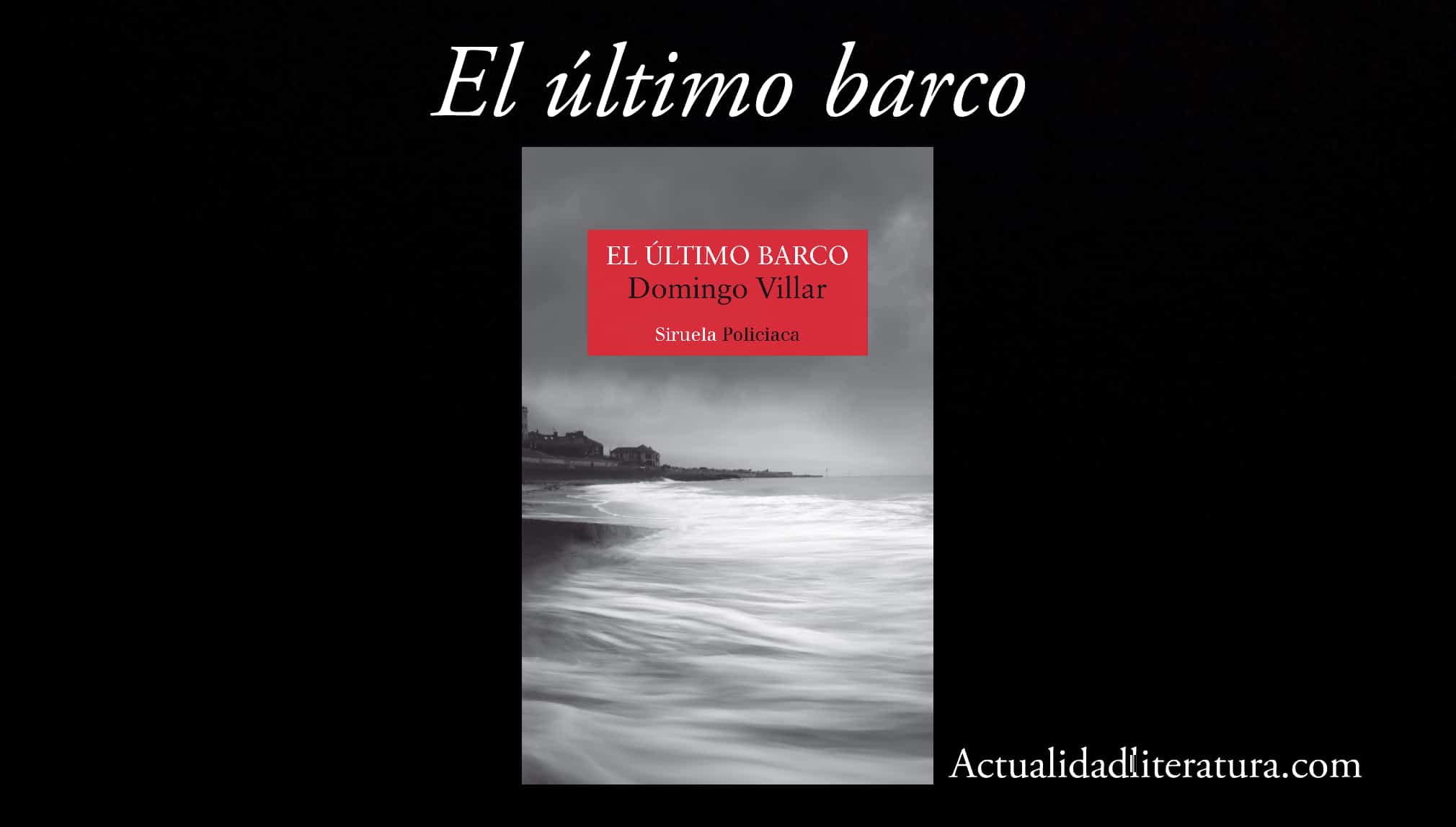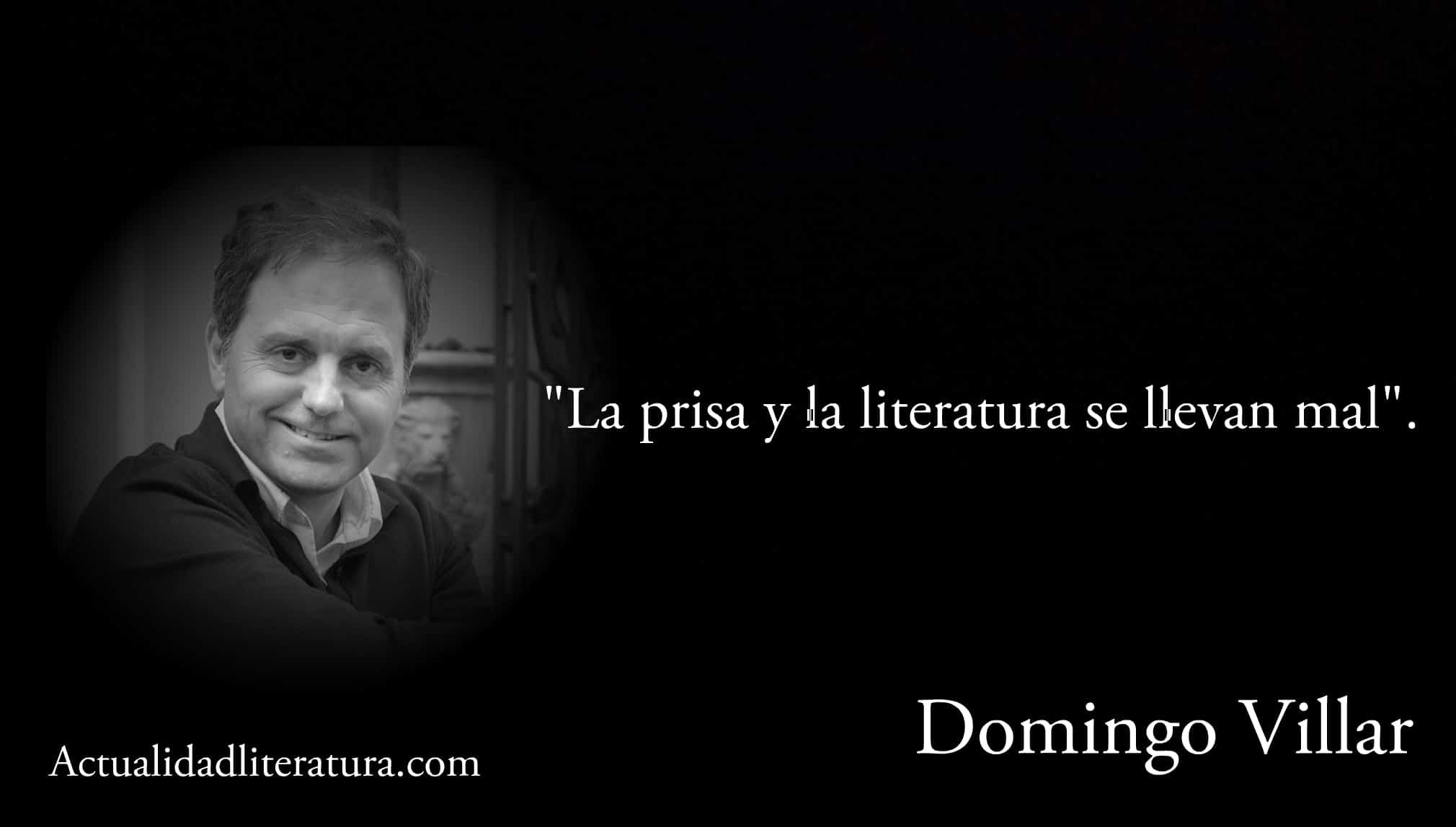
The last ship.
The last ship (2019) is the third book by Vigo author Domingo Villar. Starring the inspector Leo Caldas, the title is the closing of a crime novel series preceded by Water eyes (2006) and The beach of the drowned (2009). The first issue of the trilogy obtained modest commercial figures compared to the spectacular sales figures of the second installment.
Hence, it was not surprising when The beach of the drowned was successfully adapted to the cinema in 2015, under the direction of Gerardo Herrero. Like the film, the entire trilogy takes place mainly in Galicia. All the characters involved with the thread of events have some kind of link with the sea and the Rías de Galicia.
About the author, Domingo Villar
Sunday Villar Vázquez was born in Vigo, on March 6, 1971. He was a History student at the University of Santiago de Compostela, although later he worked as a screenwriter for film and television. Later he has been a gastronomic and literary commentator in various media in Madrid, the city where he currently resides.
Villar originally wrote his crime novel trilogy starring Inspector Leo Caldas in Spanish and Galician. The series has been translated into several languages and has earned him several literary and film awards for its adaptation to the big screen. Among them, we can mention:
- Antón Lozada Rodríguez Award.
- Prize from the Galician Booksellers Federation.
- Frey Martín Sarmiento Award.
- Syntagma Award.
- Brigade 21.
Own style, Galician style
Despite his relatively short literary career, Villa has developed a quality that is highly sought after by many writers. (and achieved by very few): a style of its own. In this sense, the Vigo author's experience as an audiovisual scriptwriter is evident in his way of reliving historical plots. The atmospheres created around quite deep characters are especially striking.
Likewise, the descriptions of his scenes are very detailed. The dynamics of the narrative thread has a very pleasant and entertaining rhythm for the reader (it could not be otherwise with such a perfectionist author). Without harassing him with his prose but without ceasing to bring him moments of intrigue and humor. In which —of course— a good dose of typical Galician irony cannot be missed.
The Leo Caldas trilogy according to Domingo Villar
In statements issued to the Saturno Aragón channel, Villar affirmed that he never planned to write a trilogy around the character of Leo Caldas. In fact, the cases presented in the three publications can be read each one separately, without the need to have a specific order.
Moreover, Villar insists on the realistic vision of his story, to such an extent that it integrates many real places and characters. He even names his friends. He identifies himself as part of a group of authors whose intention has "brought the crime novel out of the underworld." Without going too far, it highlights the writer of the genre, Fred Vargas, recent winner of the Princess of Asturias Award.

Sunday Villar.
Argument from The last ship
You can buy the book here: The last brco
Victor Andrade, An eminent surgeon from Vigo denounces the disappearance of his daughter Mónica at the city police station. A thirty-year-old teacher with a very simple lifestyle (compared to her family). Whose whereabouts have not been known for five days. For this reason, when the inspector Leo Caldas comes into action together with his assistant Rafael Estévez, the clues are very diffuse.
The case is under the supervision of Commissioner Soto, whose wife was intervened by Andrade. It is only known about Mónica that she lived in a little house in Tiran, between the towns of Cangas and Moaña. Likewise, in his working days he crossed the estuary to teach ceramics classes at the School of Arts and Crafts.
Summary
The introspective Inspector Caldas arrives at the other side of the estuary to examine the house of the disappeared woman. His personality contrasts completely with the verve and daring (sometimes even stubborn) of his Aragonese assistant. The police plot mixes true stories and elements with the myths and legends of Galicia, all very well documented.
As the interrogations between the Morrazo residents progress, the author takes the opportunity to masterfully describe the unique locations with their inhabitants. In the same way, Villar makes an implicit tribute to the beauty of the work of the potters of the area and the creators of musical instruments.
Other characters
Among the peculiar characters of the Galician enclave are marine biologist Walter Cope, an English friend of Monica, his mother Rosalía and Andrés el Vaporoso, a fisherman who believes in mermaids. However, the most enigmatic subject of the place is Camilo Cruz, the young man with the magnificent drawings (unable to communicate) who signs his paintings with a spiral.
In addition, Some of Caldas's colleagues, the potter Miguel Vázquez, the luthier Ramón Casal participate in the city of Vigo and Napoleon the vagabond philosopher. Leo's father also arrives from the Portuguese border and Inspector Vasconcelos, who is looking for a serial killer nicknamed El Caimán (so called because he leaves his victims in muddy places).
Investigation Development
As a good crime novel, the taciturn protagonist has an internal evolution as the keys to the investigation are revealed. The investigations take place on both sides of the estuary and gradually the tracks, initially blurred, they point to the real culprit. While the ending left some readers unhappy, it is quite consistent.

Quote by Domingo Villar.
Meta
A book of more than 700 pages can be intimidating. In case it is not full of surprises, it becomes - probably - a very heavy reading. However, Villar manages to maintain the expectation until the last pages without resorting to dramatic twists or very histrionic situations or characters. Thanks, in part, to a simple structure of 151 short chapters.
Of course, he achieves a very effective hook through the depth of his characters, full of nuances and imperfections, very human, extremely real. Therefore, Villar's "trick" consists in awakening the empathy (and attachment) of readers towards his characters in a very well written novel.